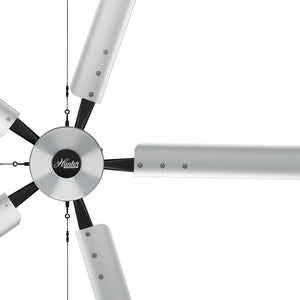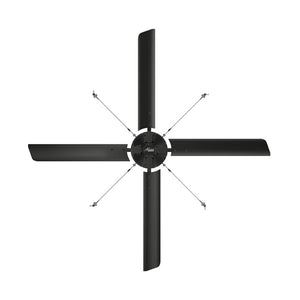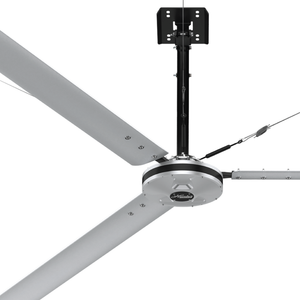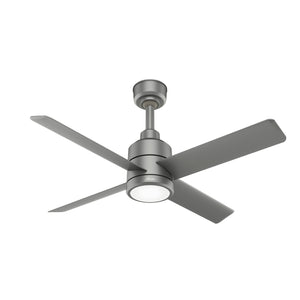So now you know that CFM is used to measure how much air a fan is capable of moving, but how do you trust the numbers that an industrial fan manufacturer advertises? If the testing must be done in a special lab, how do you know if the numbers are accurate? The truth is, when measuring CFM, it is easy to make the airflow seem more impressive by testing right next to the fan blades. But that reading is not helpful considering that HVLS fans are usually hung 20-30 off the ground.
Thankfully, this is where third party verification comes in. The Air Movement and Control Association (AMCA) is one of the most highly regarded international, not-for-profit organizations in the air movement and control industry. If an HVLS fan is AMCA Certified, it means that the numbers advertised reflect the actual capabilities of the fan. In the scenario outlined above, this means that the CFM measurement was taken at floor level, rather than right next to the fan blades, and more accurately, reflects the fan’s capabilities.
YOU MAY ALSO BE INTERESTED IN: Hunter Titan HVLS Fan
AMCA Accredited Laboratories
So, what about the HVLS fan laboratories we’ve mentioned a few times? These obviously need to be state-of-the-art facilities staffed by airflow experts. But AMCA also offers a program to third-party accredit the lab itself. If a fan is engineered and tested in an AMCA certified laboratory, it adds another level of certainty. There are only a handful of AMCA accredited HVLS fan laboratories in the country, one of which is located at the Hunter Industrial & Commercial headquarters in Smyrna, TN.
LEARN MORE: Top 5 Benefits of HVLS Fans for Warehouses
 Which Industrial Fan is Best for You?
Which Industrial Fan is Best for You?
 What are HVLS fans? The Basics & Benefits
What are HVLS fans? The Basics & Benefits
 Industrial HVLS Ceiling Fan Buying Guide
Industrial HVLS Ceiling Fan Buying Guide

 100% Secure Payments
100% Secure Payments










